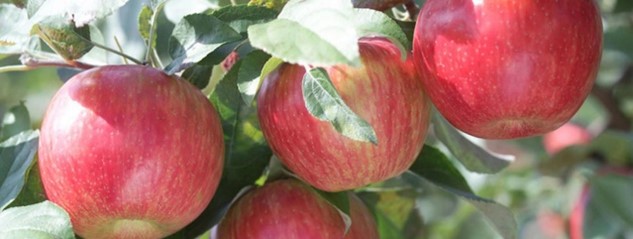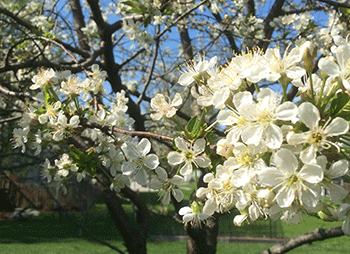Fruit Trees for the Home Garden
- 2022-01-07
- By mkirk
- Posted in Horticulture, The Garden Buzz
By Debbie Moody, Colorado Master Gardener

Adding fruit trees to your landscape does take some planning: good site selection, picking a disease resistant variety, proper planting techniques, good watering practices, training, pruning, thinning and pest management. There are two types of fruit trees: Pome fruits (apples, pears and quince) and Drupe or stone fruits (apricots, sour and sweet cherries, peaches and plums). Most fruit trees are self-pollinating. You will get more fruit production if you have more than one apple tree.
Here’s a step-by-step plan:
- If possible, the year before you plan to add a fruit tree to your landscape have a soil test done by a reputable soil lab.
- Choose the site for your tree. Fruit trees need full sun. Avoid low lying areas.
- Good drainage is a must. Fruit trees do not like to sit in soggy soils.
- There are many varieties of fruit trees that are appropriate to plant along the Front Range.
- Proper planting is essential. Here are instructions on how to plant your tree.
- Give new trees 3-5 gallons of water a week for the first year, later 1”-3” per week. Check the moisture at 6”-8” down in the soil before watering.
- Pruning and thinning are important to keep fruit trees to a manageable size and to increase fruit production.

While late Spring frosts can kill the buds or blossoms on your trees which results in no fruit production, it is totally worth the care and effort when you can enjoy the “fruits of your labor.”
Horticulture Resources
- Garden Buzz Archives
- CSU Extension Resources
- Colorado Master Gardener Program
- Foothills to Plains Native Plant Master Program
- Native Bee Watch Community Science Program
- The Co-Hort Blog
- PlantTalk Colorado
- Soil Testing
- Plant Select
- Emerald Ash Borer
- Japanese Beetle
- Colorado State Forest Service
- Ask an Expert


